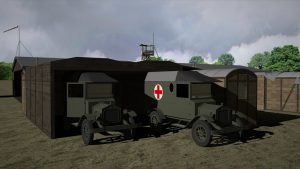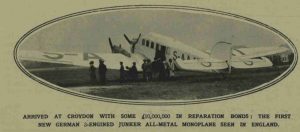 |
| Interior of Scylla (a postcard in the collection of Croydon Aiport Society) |
As far as comfort was concerned, everything was done to give the customer a truly ‘first class’ experience and the interior fittings of the HP 42 planes used in the early thirties and succeeded by the Scylla models of the mid-thirties equalled the opulence of a quality hotel or pullman train. It was on the Silver Wing service that the concept of fine dining in the air was born. On early journeys, simple sandwiches and soup from a thermos flask had been provided, but once the HP42s came into use, a varied and lavish menu was offered to passengers together with the services of a bar. The crockery and cutlery used were of fine quality, though the composition of the china was made especially light to save weight on the plane.
In 1931, the five-course lunch cost four shillings, the six-course dinner five shillings and afternoon tea was two shillings. This last was often very fine and included pastries purchased in Paris. Hot dishes and a cold buffet were on offer at lunch and dinner and the airline did its best to fulfil customer expectations. To their great surprise, oysters proved unpopular and had to be dropped from the menu.
 |
| Interior of a HP42 aircraft |




